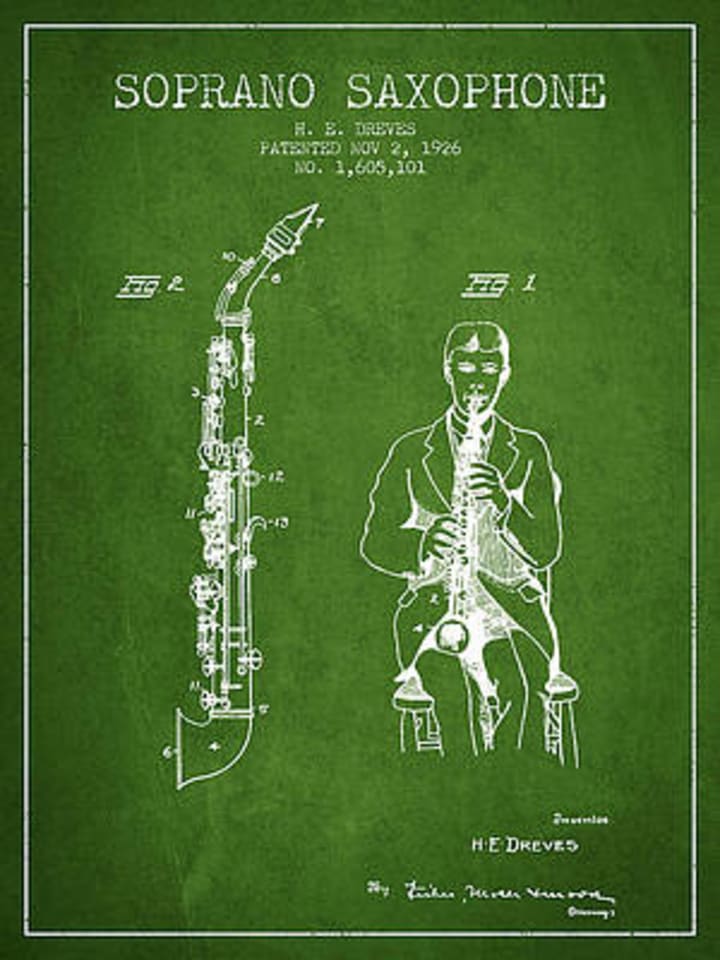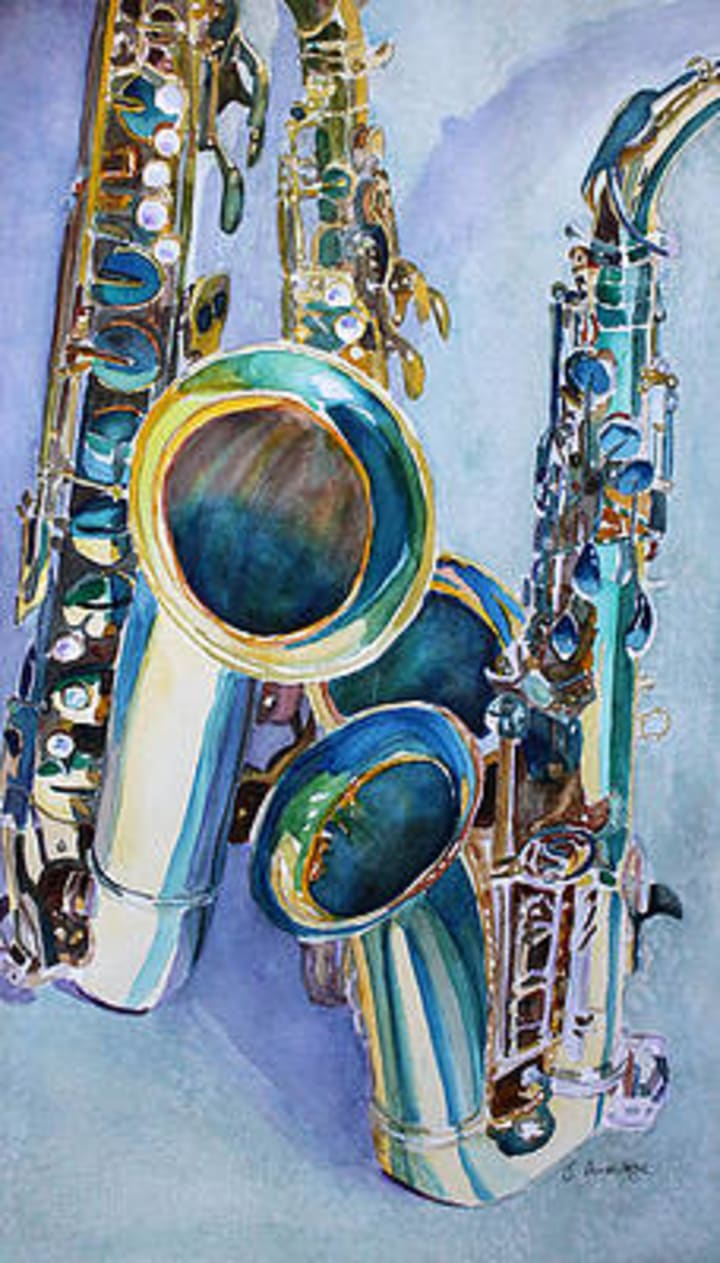The Saxophone: A Versatile and Expressive Instrument
The saxophone was invented in the 1840s by a Belgian instrument maker named Adolphe Sax.

The saxophone is a versatile and expressive musical instrument that has become an integral part of many different styles of music, from classical and jazz to rock and pop. With its unique sound and expressive capabilities, the saxophone has captivated audiences and musicians alike for over a century.
In this article, we'll explore the history of the saxophone, its different types and playing techniques, and its impact on music.
History of the Saxophone
The saxophone was invented in the 1840s by a Belgian instrument maker named Adolphe Sax. Sax was looking to create an instrument that combined the power and projection of a brass instrument with the agility and flexibility of a woodwind.
The first saxophones were made of brass and had a conical shape, similar to a French horn. Over time, Sax developed a range of saxophones in different sizes and pitches, from the tiny sopranino to the large contrabass.
Despite its inventor's intentions, the saxophone didn't initially find widespread popularity. It wasn't until the early 20th century that the saxophone became a fixture of jazz music, thanks in large part to the pioneering work of musicians such as Sidney Bechet and Coleman Hawkins.
In the decades that followed, the saxophone became a staple of many different styles of music, from the big band swing of the 1930s and 1940s to the soul and funk of the 1960s and 1970s.
Types of Saxophones
There are several different types of saxophones, each with its own unique sound and range.
The most common types are:
- Soprano saxophone: The smallest of the saxophones, with a bright and piercing sound.
- Alto saxophone: The most commonly used saxophone in jazz music, with a smooth and mellow sound.
- Tenor saxophone: Often used in rock and pop music, with a rich and soulful sound.
- Baritone saxophone: The largest of the saxophones, with a deep and powerful sound.
The saxophone family is comprised of several different types of instruments, each with its own unique sound and characteristics. The most commonly used types of saxophones are the soprano, alto, tenor, and baritone saxophones, but there are also several rarer types that are used less frequently.
Soprano saxophone
The soprano saxophone is the smallest of the saxophones and produces a bright and piercing sound. It has a range that extends from a low B-flat to a high F-sharp and is commonly used in classical music, as well as in jazz and pop.

Alto saxophone
The alto saxophone is the most commonly used saxophone in jazz music and produces a smooth and mellow sound. It has a range that extends from a low B-flat to a high F-sharp and is often used for solos and improvisation.

Tenor saxophone
The tenor saxophone is slightly larger than the alto saxophone and produces a rich and soulful sound. It has a range that extends from a low B-flat to a high F-sharp and is often used in rock and pop music.
Baritone saxophone
The baritone saxophone is the largest of the saxophones and produces a deep and powerful sound. It has a range that extends from a low A-flat to a high E-flat and is commonly used in big band jazz and other large ensemble settings.
In addition to these four main types of saxophones, there are also several rarer types that are used less frequently. The sopranino saxophone is even smaller than the soprano saxophone and produces a higher-pitched sound. The bass saxophone is larger than the baritone saxophone and produces an even deeper sound. The contrabass saxophone is the largest of all the saxophones and produces a very low, rumbling sound.
Each type of saxophone has its own unique characteristics and sound, which makes them all valuable additions to any musical ensemble or performance.
Playing Techniques
The saxophone is a very expressive instrument that can produce a wide range of sounds and effects. Some of the most common playing techniques include:
Vibrato: A slight variation in pitch that adds warmth and character to the sound.
Glissando: Sliding between notes for a smooth and fluid sound.
Staccato: Short, sharp notes for a percussive effect.
Trills: Rapid alternation between two notes for a decorative effect.
Impact on Music
The saxophone has had a major impact on music, particularly in the genres of jazz and rock. In jazz music, the saxophone has been used to great effect by musicians such as Charlie Parker, John Coltrane, and Sonny Rollins, who pushed the boundaries of the instrument and helped to define the sound of jazz for generations to come.
In rock music, the saxophone has been used to add a new dimension to the sound of bands such as The Rolling Stones and Bruce Springsteen, who have incorporated saxophone solos into some of their most iconic songs.
Beyond jazz and rock, the saxophone has also been used in classical music, where it has been featured in works by composers such as Claude Debussy, Maurice Ravel, and Igor Stravinsky.
Final Thoughts
The saxophone is a truly remarkable instrument that has played a significant role in the development of music over the past century. Its versatility, expressive capabilities, and wide range of sounds have made it a favorite among musicians and audiences alike.
Whether played in a jazz club or a symphony hall, the saxophone has the ability to capture the emotions and feelings of the performer and convey them to the listener in a way that few other instruments can. Its ability to blend in with other instruments in an ensemble or stand out as a solo instrument has made it a popular choice for musicians of all genres.
About the Creator
Gokila
She is an astrophile, introvert,
loves to read books all day long,
addicts in healthy lifestyle
and having curiosity to know about new things.
Life Is As Beautiful As You Make It. Contentment Is The Key To Happiness. Peace Be Upon The Saviour.
Enjoyed the story? Support the Creator.
Subscribe for free to receive all their stories in your feed. You could also pledge your support or give them a one-off tip, letting them know you appreciate their work.






Comments
There are no comments for this story
Be the first to respond and start the conversation.